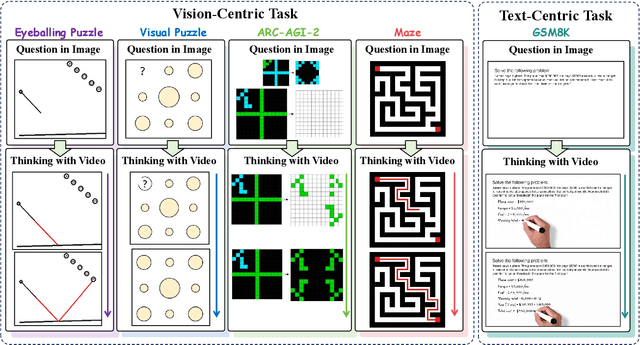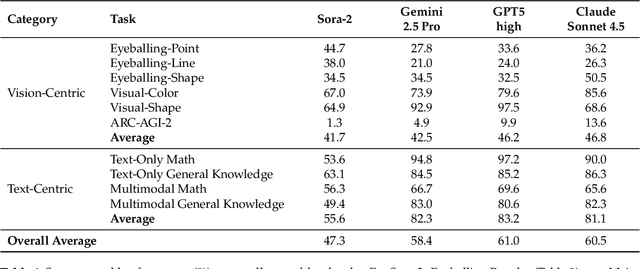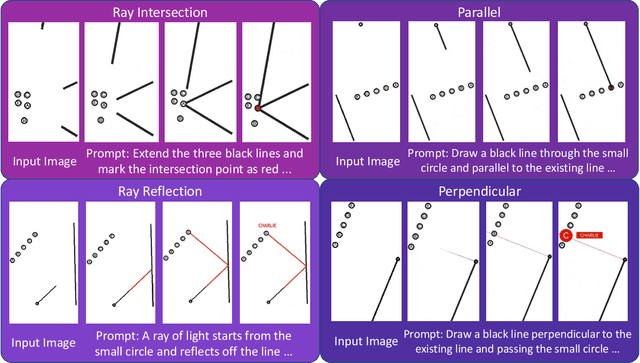Ming Zhang
VSA:Visual-Structural Alignment for UI-to-Code
Dec 23, 2025Abstract:The automation of user interface development has the potential to accelerate software delivery by mitigating intensive manual implementation. Despite the advancements in Large Multimodal Models for design-to-code translation, existing methodologies predominantly yield unstructured, flat codebases that lack compatibility with component-oriented libraries such as React or Angular. Such outputs typically exhibit low cohesion and high coupling, complicating long-term maintenance. In this paper, we propose \textbf{VSA (VSA)}, a multi-stage paradigm designed to synthesize organized frontend assets through visual-structural alignment. Our approach first employs a spatial-aware transformer to reconstruct the visual input into a hierarchical tree representation. Moving beyond basic layout extraction, we integrate an algorithmic pattern-matching layer to identify recurring UI motifs and encapsulate them into modular templates. These templates are then processed via a schema-driven synthesis engine, ensuring the Large Language Model generates type-safe, prop-drilled components suitable for production environments. Experimental results indicate that our framework yields a substantial improvement in code modularity and architectural consistency over state-of-the-art benchmarks, effectively bridging the gap between raw pixels and scalable software engineering.
Modular Layout Synthesis (MLS): Front-end Code via Structure Normalization and Constrained Generation
Dec 22, 2025Abstract:Automated front-end engineering drastically reduces development cycles and minimizes manual coding overhead. While Generative AI has shown promise in translating designs to code, current solutions often produce monolithic scripts, failing to natively support modern ecosystems like React, Vue, or Angular. Furthermore, the generated code frequently suffers from poor modularity, making it difficult to maintain. To bridge this gap, we introduce Modular Layout Synthesis (MLS), a hierarchical framework that merges visual understanding with structural normalization. Initially, a visual-semantic encoder maps the screen capture into a serialized tree topology, capturing the essential layout hierarchy. Instead of simple parsing, we apply heuristic deduplication and pattern recognition to isolate reusable blocks, creating a framework-agnostic schema. Finally, a constraint-based generation protocol guides the LLM to synthesize production-ready code with strict typing and component props. Evaluations show that MLS significantly outperforms existing baselines, ensuring superior code reusability and structural integrity across multiple frameworks
Thinking with Video: Video Generation as a Promising Multimodal Reasoning Paradigm
Nov 06, 2025



Abstract:"Thinking with Text" and "Thinking with Images" paradigm significantly improve the reasoning ability of large language models (LLMs) and Vision Language Models (VLMs). However, these paradigms have inherent limitations. (1) Images capture only single moments and fail to represent dynamic processes or continuous changes, and (2) The separation of text and vision as distinct modalities, hindering unified multimodal understanding and generation. To overcome these limitations, we introduce "Thinking with Video", a new paradigm that leverages video generation models, such as Sora-2, to bridge visual and textual reasoning in a unified temporal framework. To support this exploration, we developed the Video Thinking Benchmark (VideoThinkBench). VideoThinkBench encompasses two task categories: (1) vision-centric tasks (e.g., Eyeballing Puzzles), and (2) text-centric tasks (e.g., subsets of GSM8K, MMMU). Our evaluation establishes Sora-2 as a capable reasoner. On vision-centric tasks, Sora-2 is generally comparable to state-of-the-art (SOTA) VLMs, and even surpasses VLMs on several tasks, such as Eyeballing Games. On text-centric tasks, Sora-2 achieves 92% accuracy on MATH, and 75.53% accuracy on MMMU. Furthermore, we systematically analyse the source of these abilities. We also find that self-consistency and in-context learning can improve Sora-2's performance. In summary, our findings demonstrate that the video generation model is the potential unified multimodal understanding and generation model, positions "thinking with video" as a unified multimodal reasoning paradigm.
A Survey on Efficient Large Language Model Training: From Data-centric Perspectives
Oct 29, 2025Abstract:Post-training of Large Language Models (LLMs) is crucial for unlocking their task generalization potential and domain-specific capabilities. However, the current LLM post-training paradigm faces significant data challenges, including the high costs of manual annotation and diminishing marginal returns on data scales. Therefore, achieving data-efficient post-training has become a key research question. In this paper, we present the first systematic survey of data-efficient LLM post-training from a data-centric perspective. We propose a taxonomy of data-efficient LLM post-training methods, covering data selection, data quality enhancement, synthetic data generation, data distillation and compression, and self-evolving data ecosystems. We summarize representative approaches in each category and outline future research directions. By examining the challenges in data-efficient LLM post-training, we highlight open problems and propose potential research avenues. We hope our work inspires further exploration into maximizing the potential of data utilization in large-scale model training. Paper List: https://github.com/luo-junyu/Awesome-Data-Efficient-LLM
Automated Genomic Interpretation via Concept Bottleneck Models for Medical Robotics
Oct 02, 2025Abstract:We propose an automated genomic interpretation module that transforms raw DNA sequences into actionable, interpretable decisions suitable for integration into medical automation and robotic systems. Our framework combines Chaos Game Representation (CGR) with a Concept Bottleneck Model (CBM), enforcing predictions to flow through biologically meaningful concepts such as GC content, CpG density, and k mer motifs. To enhance reliability, we incorporate concept fidelity supervision, prior consistency alignment, KL distribution matching, and uncertainty calibration. Beyond accurate classification of HIV subtypes across both in-house and LANL datasets, our module delivers interpretable evidence that can be directly validated against biological priors. A cost aware recommendation layer further translates predictive outputs into decision policies that balance accuracy, calibration, and clinical utility, reducing unnecessary retests and improving efficiency. Extensive experiments demonstrate that the proposed system achieves state of the art classification performance, superior concept prediction fidelity, and more favorable cost benefit trade-offs compared to existing baselines. By bridging the gap between interpretable genomic modeling and automated decision-making, this work establishes a reliable foundation for robotic and clinical automation in genomic medicine.
From Scores to Preferences: Redefining MOS Benchmarking for Speech Quality Reward Modeling
Oct 01, 2025Abstract:Assessing the perceptual quality of synthetic speech is crucial for guiding the development and refinement of speech generation models. However, it has traditionally relied on human subjective ratings such as the Mean Opinion Score (MOS), which depend on manual annotations and often suffer from inconsistent rating standards and poor reproducibility. To address these limitations, we introduce MOS-RMBench, a unified benchmark that reformulates diverse MOS datasets into a preference-comparison setting, enabling rigorous evaluation across different datasets. Building on MOS-RMBench, we systematically construct and evaluate three paradigms for reward modeling: scalar reward models, semi-scalar reward models, and generative reward models (GRMs). Our experiments reveal three key findings: (1) scalar models achieve the strongest overall performance, consistently exceeding 74% accuracy; (2) most models perform considerably worse on synthetic speech than on human speech; and (3) all models struggle on pairs with very small MOS differences. To improve performance on these challenging pairs, we propose a MOS-aware GRM that incorporates an MOS-difference-based reward function, enabling the model to adaptively scale rewards according to the difficulty of each sample pair. Experimental results show that the MOS-aware GRM significantly improves fine-grained quality discrimination and narrows the gap with scalar models on the most challenging cases. We hope this work will establish both a benchmark and a methodological framework to foster more rigorous and scalable research in automatic speech quality assessment.
MDAR: A Multi-scene Dynamic Audio Reasoning Benchmark
Sep 26, 2025Abstract:The ability to reason from audio, including speech, paralinguistic cues, environmental sounds, and music, is essential for AI agents to interact effectively in real-world scenarios. Existing benchmarks mainly focus on static or single-scene settings and do not fully capture scenarios where multiple speakers, unfolding events, and heterogeneous audio sources interact. To address these challenges, we introduce MDAR, a benchmark for evaluating models on complex, multi-scene, and dynamically evolving audio reasoning tasks. MDAR comprises 3,000 carefully curated question-answer pairs linked to diverse audio clips, covering five categories of complex reasoning and spanning three question types. We benchmark 26 state-of-the-art audio language models on MDAR and observe that they exhibit limitations in complex reasoning tasks. On single-choice questions, Qwen2.5-Omni (open-source) achieves 76.67% accuracy, whereas GPT-4o Audio (closed-source) reaches 68.47%; however, GPT-4o Audio substantially outperforms Qwen2.5-Omni on the more challenging multiple-choice and open-ended tasks. Across all three question types, no model achieves 80% performance. These findings underscore the unique challenges posed by MDAR and its value as a benchmark for advancing audio reasoning research.Code and benchmark can be found at https://github.com/luckyerr/MDAR.
Type-Compliant Adaptation Cascades: Adapting Programmatic LM Workflows to Data
Aug 25, 2025Abstract:Reliably composing Large Language Models (LLMs) for complex, multi-step workflows remains a significant challenge. The dominant paradigm-optimizing discrete prompts in a pipeline-is notoriously brittle and struggles to enforce the formal compliance required for structured tasks. We introduce Type-Compliant Adaptation Cascades (TACs), a framework that recasts workflow adaptation as learning typed probabilistic programs. TACs treats the entire workflow, which is composed of parameter-efficiently adapted LLMs and deterministic logic, as an unnormalized joint distribution. This enables principled, gradient-based training even with latent intermediate structures. We provide theoretical justification for our tractable optimization objective, proving that the optimization bias vanishes as the model learns type compliance. Empirically, TACs significantly outperforms state-of-the-art prompt-optimization baselines. Gains are particularly pronounced on structured tasks, improving MGSM-SymPy from $57.1\%$ to $75.9\%$ for a 27B model, MGSM from $1.6\%$ to $27.3\%$ for a 7B model. TACs offers a robust and theoretically grounded paradigm for developing reliable, task-compliant LLM systems.
LLMEval-3: A Large-Scale Longitudinal Study on Robust and Fair Evaluation of Large Language Models
Aug 07, 2025Abstract:Existing evaluation of Large Language Models (LLMs) on static benchmarks is vulnerable to data contamination and leaderboard overfitting, critical issues that obscure true model capabilities. To address this, we introduce LLMEval-3, a framework for dynamic evaluation of LLMs. LLMEval-3 is built on a proprietary bank of 220k graduate-level questions, from which it dynamically samples unseen test sets for each evaluation run. Its automated pipeline ensures integrity via contamination-resistant data curation, a novel anti-cheating architecture, and a calibrated LLM-as-a-judge process achieving 90% agreement with human experts, complemented by a relative ranking system for fair comparison. An 20-month longitudinal study of nearly 50 leading models reveals a performance ceiling on knowledge memorization and exposes data contamination vulnerabilities undetectable by static benchmarks. The framework demonstrates exceptional robustness in ranking stability and consistency, providing strong empirical validation for the dynamic evaluation paradigm. LLMEval-3 offers a robust and credible methodology for assessing the true capabilities of LLMs beyond leaderboard scores, promoting the development of more trustworthy evaluation standards.
Physical Adversarial Camouflage through Gradient Calibration and Regularization
Aug 07, 2025Abstract:The advancement of deep object detectors has greatly affected safety-critical fields like autonomous driving. However, physical adversarial camouflage poses a significant security risk by altering object textures to deceive detectors. Existing techniques struggle with variable physical environments, facing two main challenges: 1) inconsistent sampling point densities across distances hinder the gradient optimization from ensuring local continuity, and 2) updating texture gradients from multiple angles causes conflicts, reducing optimization stability and attack effectiveness. To address these issues, we propose a novel adversarial camouflage framework based on gradient optimization. First, we introduce a gradient calibration strategy, which ensures consistent gradient updates across distances by propagating gradients from sparsely to unsampled texture points. Additionally, we develop a gradient decorrelation method, which prioritizes and orthogonalizes gradients based on loss values, enhancing stability and effectiveness in multi-angle optimization by eliminating redundant or conflicting updates. Extensive experimental results on various detection models, angles and distances show that our method significantly exceeds the state of the art, with an average increase in attack success rate (ASR) of 13.46% across distances and 11.03% across angles. Furthermore, empirical evaluation in real-world scenarios highlights the need for more robust system design.
 Add to Chrome
Add to Chrome Add to Firefox
Add to Firefox Add to Edge
Add to Edge